The History
Sometime around the first century BC, a civilisation of broadly Indo-European ancestry began to expand from around the banks of the Danube, Rhine and Rhone valleys into the rest of Europe. The spread was sudden and virulent, and by its peak, between 600 and 300 BC, the expansion had spread as far west as Ireland, as far east as Ukraine; as far north as Germany and as far south as Spain.
These people were not one nation, but groups of people who both traded and fought with each other. Their common bonds were language, customs, art, culture and warfare. Over the intervening centuries, half-truth and conjecture have been spun into fantasy and often portrayed as truth. Now though, real academic study, in the form of science – archaeology, linguistics and DNA testing - has pieced together a more realistic history.
Continental Celts
Broadly speaking, those peoples that lived in mainland Europe have become known as Continental Celts. They had established defended settlements, mastered mining and the arts of metalwork and warfare, and then began trading with the classical world. Highly distinctive cultures developed around the trading heartlands of the great rivers of Europe. First ‘Hallstatt’ and later ‘La Tène’, these two distinct cultures left behind a vast array of pottery, metalwork, burial rites and settlement types. It is from the legacy of these people in particular that we have learned about the role of the Celts in the ancient world. It is clear that they were an intelligent, accomplished, ‘family of societies,’ who played a hugely important part in the forming of Europe.
The continental Celts are the people that the Greeks referred to as ‘Keltoi or Galatae’ and the Romans called ‘Celtae or Galli.’
Insular Celts
Hiraeth deals with the Insular Celts – those that had either been here since before the Iron Age or had moved to the British Isles and Ireland from Europe. It is probably a bit of both, though these people were not thought of as Celts by the classical writers - they were called Britons.
It was not until the Renaissance, when the Classicists were really scrutinised, that there was any sort of study into the ethnicity of their conquered lands.
Later, research by the Scot, George Buchanan (1506 -1582) and the Welshman, Edward Lhuyd (1660- 1709) led to the realisation that ‘Gaulish’, spoken by the ancient French and recorded by Julius Caesar, was in fact related to the then ‘living’ languages of Welsh, Gaelic, Breton, Manx and Cornish.
During the eighteenth century, this linguistic classification took off as an idea and the label ‘Celt’ became established. It seemed to encompass all the people in the British Isles and Ireland who had ever spoken a Celtic language. It is highly unlikely that all these groups ever felt affiliated as fellow Celts, especially as they were usually fighting with one another. However the name stuck, flourished and became hugely romanticised. The lack of written testimony by the Celts themselves means we rely on that of ‘others’ to provide it. Although it is always worth remembering, that just because something is written down, that does not make it true.
Demise of the Insular Celts
When Julius Caesar began his military campaign in 55-54 BC, all of Britain and Ireland was populated by Celts. These various tribes traded and fought with each other over the centuries, but were bound together by their culture, language and necessity.
After the invasion of England in 43 AD, the Romans swept through the country, despite an initially fierce Celtic opposition. They had a tougher time of it in Wales and the west, though they managed to defeat and largely destroy the druid stronghold of Mona, Ynys Môn.
It was a constant struggle for the Romans to keep control of their borders in the north and west, but by the time they left these shores in the fifth century AD, the fertile lowlands of England had been totally Romanised. Into the ensuing, chaotic vacuum of power stepped the Saxons, Jutes and Angles, bringing a Germanic culture and language into the lowlands of England from Dorset to the Midlands. By 600 AD the Saxons moved up to Northumbria and gradually - through a mixture of marriage, alliance and conquest, larger kingdoms subsumed the smaller ones, and Saxon royalty emerged.
The Vikings and Danes were the next to invade Britain and Ireland, beginning in about the 790s AD and for the next few hundred years the Germanic and Scandinavian powers slogged it out between them, with the once Celtic people adopting more and more northern European culture and language.
By the time of the Norman invasion of 1066, the remaining Celts had been completely driven out into the north and west of these islands. They continued to speak their own languages and live within their own culture throughout the Middle Ages. They often rebelled against whoever was in power at the time, until the arrival of Edward I on the throne of England. Known as ‘Hammer of the Scots’, a more accurate title for this monarch might have been ‘Hammer of the Celts.’
Edward I realised that the bedrock of the Welsh was their language, and he embarked on a campaign to obliterate the ‘lingua Wallensica’. In the hope of crushing their constant rebellions, Edward built his castles and conquered Wales before moving on to Scotland, but he never managed to extinguish the Welsh language.
Sea Kingdoms
Celtic Britain and Ireland

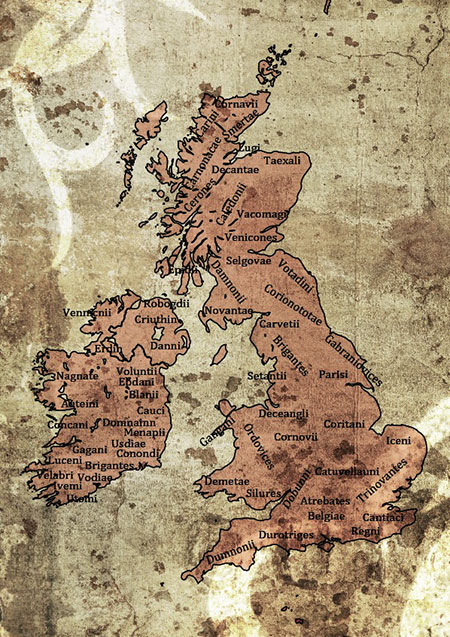
Sea Kingdoms
Character Traits
No ancient Celt ever wrote a list of their general characteristics, but several other nations were keen to do so, and there is a broad consensus:
- A fiery disposition, shot through with a capacity for extreme bravery and alcohol.
- A talent for great oration, together with an impressive memory of genealogy and oral history.
- Excessive vanity and boastfulness.
- Excellence in horse riding, charioteering and sailing.
In line with their reported character traits, the Celts seemed to be extremely fond of physical decoration; make-up and jewellery in particular was popular for both sexes. Bracelets, rings, brooches, earrings and anklets have been found in graves of both men and women. The gold ‘hero’s torc’ was not only worn by men, both Boudicca and Medb were famed for theirs.
Diodorus Siculus described Celts as:
"Tall of body with rippling muscles and white skin. Their hair is blond and not always naturally so, as they make it their practice by artificial means to increase the distinctive colour which nature has given it."
He also reported that many Celts painted and tattooed their bodies, painting their eyelids and lips.
Society Structure
Warriors
A huge amount has been written about the Celts as a belligerent people, famously brave in battle, fierce and savage. The Celts belief in an afterlife meant they were not scared of dying, which made them formidable enemies.
Among their noted accomplishments, the Continental Celts: defeated the Etruscan empire, invaded Rome and the Greek peninsula, formed Cleopatra’s private bodyguard, constituted the backbone of Hannibal’s force and in time, fought ferociously in the Roman army. Their expertise with weapons, horses and chariots made these Celts outstanding on the battlefield and over time, a mercenary group evolved, the 'Gaesatae'.
The 'Gaesatae' existed outside the tribal set up and became renowned throughout Europe for their expertise in war and for their ‘esprit de corps’. It is this group of men that were renowned for going into battle naked, and for their open homosexuality.
Battle craft was also highly prized by the Insular Celts, who were forever fighting with one another. Unfortunately, martial excellence was eventually no match for the discipline and numbers of the Roman army, which swept on to Britain after conquering the Celts of Europe - though they never got to Ireland.
Religion
Celtic languages
Language, not race, has always been the unifying component of the Celts and now only five Celtic languages remain that can still be considered ‘alive’: Welsh, Irish Gaelic, Scots Gaelic, Breton and Cornish.
In the 1700s, Edward Lhuyd discovered that these living languages in the west of these islands bore a resemblance to ancient Gaulish. By naming them ‘Celtic’, he managed to both create a bond between them - and a brand for them. Subsequent study revealed that from one original ‘Celtic’ language, two forms were born. In ‘Hiraeth’, this original, ancient language was ‘Old Welsh’, though some would claim it should be an ancient form of Irish. Either way, by 400 BC they had gone their separate ways.
Goidelic or Q-Celtic, Irish, Scottish, Manx. Mac for son.
Brythonic or P-Celtic, Welsh, Cornish, Breton. Map for son.
Welsh and Irish are the most viable of current Celtic languages, but only twenty percent of the Welsh are Welsh speakers, and only ten percent of the Irish speak Gaelic. Breton is classified as a ‘severely endangered’ language, having declined from about a million speakers in 1950, to 200,000 in the year 2000. In Scotland, there was brutal and systematic repression after Battle of Culloden. These days it would be seen as a kind of 'ethnic cleansing' that destroyed Scots Gaelic as well as their clan structure - though a variety of ‘non English’ languages are still spoken in Scotland.
The last recorded monoglot Cornish speaker, Dolly Pentreath died in 1777, and was thought to have taken the language with her, although some records suggest it survived among fishermen well into the 19th century, but passionate stalwarts have managed to revive it as an academic language. The last of the native Manx speakers, Ned Maddrell died in 1974. Fortunately the language survived in recordings made with him in 1964.
After his death, the Tynwald (Isle of Man parliament) was panicked into appointing a Manx language officer. Since then, the number of native language speakers has risen to one thousand.
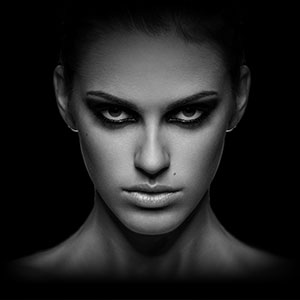
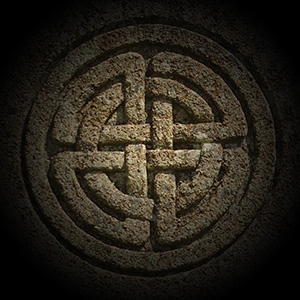
The Women
The Myths
The History
The Texts
The Welsh Texts
The Irish Texts
Purchase a Book

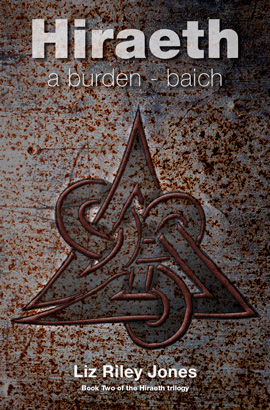
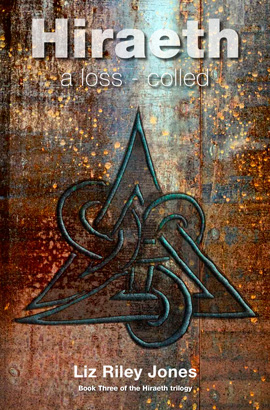
Beliefs
Celtic law systems
Cyfraith Hywel Dda and Brehon law.
Cyfraith Hywel Dda – the Laws of Hywel - was a Welsh Celtic law system set down by Hywel ap Cadell, also known as Hywel Dda, or Hywel the Good, who ruled over most of what is now Wales in 910-950 AD. Hywel revised the existing laws of the land - which had previously been passed down by bards and jurists - and had them set down in writing. There are about seventy manuscripts in existence, though only half of them pre-date the sixteenth century, and all of them are written in Latin, not Welsh.
Brehon law is the Irish version of the Celtic laws, and had many similarities to Cyfraith Hywel Dda. Both these law systems show that, despite the male domination of Welsh and Irish Celtic society, women enjoyed greater freedoms, rights to property and recourse to justice than did their English (Saxon, Danish, Norman) counterparts.
Alistair Moffat, a Scottish Celtic writer and historian coined the name ‘Sea Kingdoms,’ meaning the land of the Celts of Britain and Ireland. His book is a beautifully written and fascinating read with its central concept, that the seas, not the land, were the motorways of ancient Celtic Britain.
‘The sea is the unbroken link that binds this (Celtic) experience together.’
It seems a very sensible concept for a small group of islands, with renowned nautical expertise. Suddenly, land boundaries become far less relevant. It is much easier to make sense of the British and Irish Celts if they are viewed from the sea, rather than the land. The watery highways of the west are quicker and easier than dry land – if you know what you are doing.
Celtic names of the Sea Kingdoms
Alba – Scotland
Cymru – Wales
Ellan Vanin – Isle of Man
Erinn – Ireland
Kernow – Cornwall
Breizh – Brittany
‘Celticism’ is a fascinating and absorbing pastime; however it is also filled with contradictions. So much has been written about the Celts, and it can swing wildly from one extreme to another. Some historians count their existence as almost mythological, while others credit the Celts with everything that the ‘Romans have ever done for us.’
There is not even consensus on the meaning of the word ‘Celt’. The nominations abound; from celsus in Latin and cléthe in old Irish meaning ‘raised up’, to other random words, with differing origins, but broadly meaning ‘to strike’. The front-runner though means ‘hidden from’ - the old Irish ‘celim’ and ‘celaf’ from the old Welsh. In modern Welsh the word ‘celu’ means ‘to hide’, while ‘celwydd’ means ‘a lie’ - basically, the truth hidden.
Perhaps it is a reference to the druids’ prohibition of the written word, in order to ‘hide’ their knowledge, and possibly the etymology of the word ‘kilt’. As a result, there has been a certain amount of cherry-picking from various opinions, texts and authors in these notes, and throughout the Hiraeth story itself.
Celtic society was essentially constructed from farming communities, and set up in a ‘caste’ type system. However, it had very well established law systems - Brehon Law, in Ireland and Cyfraith Hywel Dda in Wales.
There is some evidence of slavery among the Celts, but this status only seemed to occur as a result of punishment or extreme hardship. It does not seem to have become an industry for the Celts - unlike their counterparts in the ‘Classical’ world. These slaves would have been at the bottom of society with the farmers and menial manual workers above them. There was a warrior aristocracy, from which the royalty was bred, and an elite intellectual class.
Within this group of people were the judges, doctors and druids. Druids could be roughly sub-divided again into ovates, bards and druids. Between them, these intellectuals were responsible for the spiritual well-being of their communities. The bards were the living repositories of each clan’s history and identity, as well as providing the entertainment. Ovates were seen as natural philosophers, diviners and seers, but the real power lay with druids, who could act as both judge and jury in serious matters of law, and had the power of veto and expulsion from a community.
Celtic society was run by men, but the women enjoyed a more equal role than their Greek or Roman counterparts. Warrior women such as Boudicca, Cartimandua, Scáthach, and Gwenllian were magnificent, but rare, though women were able to govern, take part in politics, the law, the arts and the religious life. Under Celtic law they could own property, choose their marriage partner and decide to divorce.
Both girls and boys were sent away from home for a time, to be taught in a type of apprentice scheme. An interesting anomaly was the blacksmith, who was revered, not as a manual worker, but in the same class as the intellectuals. They were also thought to share the gift of magic along with the druids.
This more harmonious and natural existence alongside men began to disintegrate as the moral influence of the strong Celtic woman was eroded by invasion. Firstly by Rome, whose attitude to women was barbaric, then successively by the low status in which they were held by the Germanic races - and finally of course, by Christianity.
Celts believed that the soul resided in the head, and that the soul was indestructible. For this reason, warriors often cut off and kept the embalmed heads of friends or enemies that they admired. Heads holding conversations, after having been cut from their bodies, is a staple of both Irish and Welsh mythology.
The Celtic ideas about an afterlife seem to centre on ‘Annwn - Otherworld’. The belief that, when someone dies in this life, they are born into the otherworld and when they die there, their soul can be born into a body in this life. Evidence for this belief can be found in the extravagance of worldly belongings found in the burials of important Celts. It was possible for a mortal to reach ‘Annwn’, and there are a few who managed it, but they were only the bravest and best in Irish and Welsh mythology. However, once a year, at Samhain, the fragile walls between these two worlds were thin enough to pass through.
‘Wicker Man’ human sacrifice is often associated with the Celts. Men, women, children and animals burnt to death in a large man-shaped structure. However there does not seem to be any archaeological evidence of this wholesale slaughter. The reports of this atrocity come only from the texts of Romans - hardly innocents of bloodshed themselves. There have though, been archaeological studies, where human sacrifice was found to be the only possible cause of death. Most cultures have, at one time or another, resorted to pacifying the gods with the occasional human, and the Celts certainly practised this - but why and how often, we do not know. We do know that bulls were honoured for their vitality, strength and fertility. They were often the victims of ritual slaughter and very many mythologies are centred on them.
All watery places, not just the sea, were thought of as possible routes through the ‘otherworld’: dangerous places where gods and mortals could mingle. Lakes and streams, even bogs became sacred. All over Britain and Ireland. Beautiful metal objects such as swords, spears, shields and jewellery have been found in them, and it is likely these were private offerings to the gods.
There does not seem to be very much evidence of a punitive religious order, rather more a strong moral code and law that kept the society under control. There were ceremonies over which druids or ovates presided and festivals: Samhain, Winter Solstice, Imbolc, Beltane, Summer Solstice and Lughnasadh. These festivals celebrated both the recycling of nature and the celestial bodies of astronomy.
Early Christian monks wrote down the origin myths of the Celts, so there is a fair amount of ambiguity in the symbolic referencing. However, combining them with archaeological evidence and Classical texts, gives us a creation myth similar to that of the Indian Vedas:
A Mother Goddess, Danu (Irish), Dôn (Welsh) of the ‘Divine Waters’ Danuvius (Danube) - gushed down onto the chaos of earth and gave life to Bile (Irish) Beli (Welsh), the sacred oak from whom was born all the other gods and goddesses. These are called the Tuatha dé Dannan in Irish, the Children of Danu.
The Celts were clearly a polytheistic society, with more than four-hundred deities to choose from. Many were specific to a particular tribe or place, and though there were clearly some favourites, it is hard to differentiate between gods and powerful mortals. Many of the major gods of the Celts were triune - they had three different aspects and often three different names. A bewildering array of deities were revered by the Celts, which is perhaps why no clear hierarchy emerges.
Amaethon – Welsh god of agriculture, son of Beli and Dôn.
Agroná – The British Celtic goddess of battle and slaughter.
Aranrhod – Virgin goddess of the sky and fertility. Daughter of Beli and Dôn. Mother of Dylan and Lleu.
Andrasta – Romano Celtic goddess of war and of particular interest to the Iceni tribe.
Arawn – God of Annwfn, the otherworld.
Beli – God of death and husband of Dôn.
Bran – King of the Island of the Mighty (Great Britain) more of a god than a man.
Brigantia – The goddess of war, healing, water, fertility and prosperity. The Brigantes tribe of northern England were named after her. Brigindo, Brigit.
Camulos – God of war.
Cernunnos - Horned god of male fecundity and power. Often associated with the ‘Green Man’ imagery and symbolism.
The Dagda – Irish triune father-figure god, also known as Eochaid, Ollathair.
Dôn – Goddess of life. Her children with Beli: Amaethon, Aranrhod, Gilfaethwy, Gofannon, Gwydion, and Nudd were called the Children of Light.
Dylan – God of the sea. Son of Aranrhod.
Gofannon – God of smiths and master of skills.
Gwydion – God of magic, poetry and music.
Lugh, Lleu - Warrior god of shining light.
Llŷr – God of the sea, music and magic. Father to Bran, Manawyddan, Branwen, called the Children of the Dark.
Mabon, Maponus – Celtic god of music and poetry, love and youth.
The Mórrígan, Mórrigú – Triune goddess of death who appeared as Macha, Badb, Nemain. Presiding over life, death and sexuality. The maiden, the mother, the hag.
Rhiannon, Epona, Macha – Horse goddess.
The People
Book One
Hiraeth
a mark - marc
Book Two
Hiraeth
a burden - baich
Book Three
Hiraeth
a loss - colled

